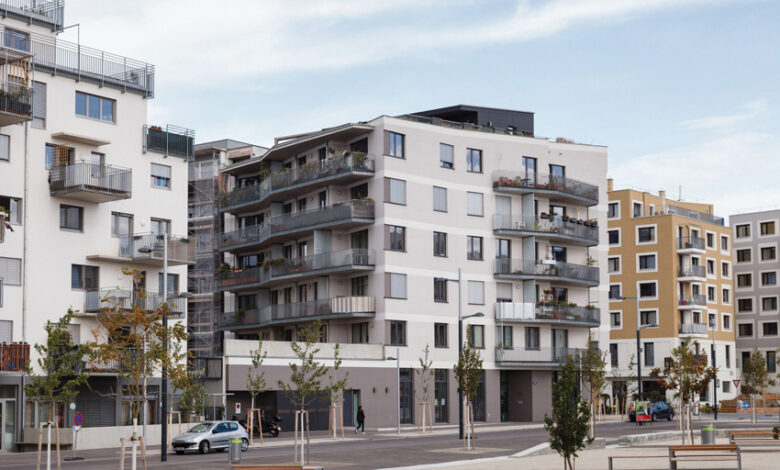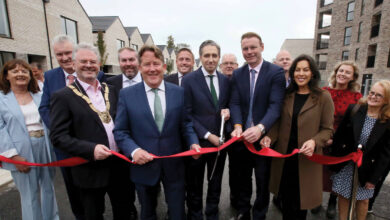Cost rental: European best in class

A study performed by Housing Europe for The Housing Agency sheds light on how cost-based social renting operates in Austria and Denmark, in order to inform The Housing Agency on different cost rental models, as Ireland steps up its delivery under the tenure model.
Austria

Social housing in Austria, 2020: 944,100 units (24 per cent of housing stock)
– Of which: Limited profit housing associations: 667,300 (17 per cent)
– Of which: Municipalities: 276,800 (7 per cent)
The bulk of Austrian social housing stock is made up by Gemeinnützige Bauvereinigung, or limited-profit housing association (LPHA) housing, which are officially classified as private enterprises with independent boards of management. Under the laws set out in the Limited-Profit Housing Act, only LPHAs can become providers of cost-based social housing. It is possible for for-profit developers to also participate in the cost rental sphere in Austria, but such developers are required to keep their rents at a cost-based price until any public loans used in the development of their housing has been repaid, while LPHAs are required to keep their rents at cost-based prices in perpetuity.
‘Cost’ is defined, with developers required to recoup costs incurred for all planning, construction, financing, and management; developers do not have the option to charge below-cost rents. Costs are also calculated on an individual basis per block or estate, meaning that an LPHA with a large portfolio cannot spread the costs of developing one development to the rents of another.
A typical cost-based social housing project in Austria is funded through a combination of sources:
- Low-interest public loans (30-40 per cent);
- Bank loans (30-40 per cent);
- LPHA equity (10-20 per cent);
- Tenant contribution through down payment (5-10 per cent); and
- Additional public grant (5 per cent).
Rents are calculated using the grundmiete (basic or flat rent) system, which is set out in the Act. This is indexed to CPI inflation and is updated every two years; maintenance and improvement funds are also included in the rent, ranging €0.53 per square metre for a new building to €2.13 per square metre for buildings over 30 years old. Once and LPHA has cleared the debt associated with a development, rents have been found to fall by €0.50-€1.50 per square metre. Just 10.3 per cent of Austrian households say that meeting housing needs represents a ‘heavy’ financial burden for them.

Denmark

Non-profit housing in Denmark, 2021: 560,931 units (20 per cent of housing stock)
The non-profit housing sector in Denmark is made up of over 500 housing associations, covering approximately 7,000 individual housing estates and 560,000 dwellings, providing homes for almost one million residents. Regardless of variance in size, these non-profit providers obey the same basic underlying legal and regulatory structure. Non-profit housing adopts a ‘universalist’ approach, meaning that anyone can access it, although those in urgent need do tend to be prioritised. The absence of income criteria for applicants allows for flexibility in creating balanced resident mixes in these housing developments.
Housing associations are tasked with the development of non-profit housing blocks and estates but are subject to municipal oversight in terms of spending and budgets. Municipal authorities are also in charge of monitoring housing need within their jurisdictions and deciding when and where to construct new non-profit housing, meaning that building and operation, but not decision making, are the jobs of these housing associations. Non-profit housing in Denmark operates under a ‘rental balance’ principle that is enshrined in law, meaning that income and expenditure within the social housing system must balance out. Rents charged are strictly what is necessary to cover the providers’ expenses, including administrative costs.
Funding for non-profit housing in Denmark is typically arrived at through:
• Loans from mortgage institutions (86-90 per cent);
• Interest-free, 50-year municipal loans (8-12 per cent); and
• Tenant equity in the form of deposits (2 per cent).
The Danish State and municipalities can provide some financial support for the construction of new non-profit housing. Where a municipality has provided funding, it reserves the right to directly allocate a percentage of units within developments. Typically, this anvisningsret, or allocation right, covers 25 per cent of non-profit units in a development, but this proportion can go higher. Such direct allocations are typically reserved for those in immediate housing stress, victims of domestic abuse, and those experiencing homelessness, allowing them to bypass the usual queue system.
An upper limit on non-profit housing construction per square metre ensures that rents are kept low. The limit varies depending on housing type and region, with a family home in the capital region limited at 21,460 DKK (around €2,880) per square metre, with an additional amount corresponding to 368,530 DKK (around €49,500) per unit.
Annual debt repayments, which determine the rent, are equal to 2.8 per cent of the total initial development cost of the property, plus current contributions to mortgage loans, amounting altogether to approximately 3 per cent of the property development cost. When higher interest rates have been incurred, the state guarantees that the 2.8 per cent rate is maintained and pays the difference. In practice, the payment to the government, which then services the housing associations’ mortgages on their behalf. Just 7.2 per cent of Danish households report a ‘heavy’ financial burden when meeting their housing needs.





